Audio GD R8 DAC, Master 1 preamp, Master 3 power amp, and Magna Hifi ACSS cables
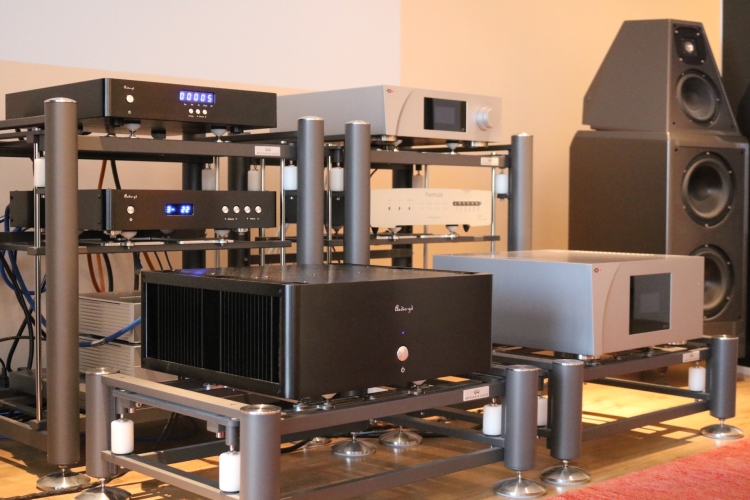
Review samples supplied by Magna Hifi
Retail prices can be found after the conclusion
Ten or so years ago, most equipment from the Far East was known for being cheap and having been made to low production standards. Well, that has changed. Of course, there are more and more European and American companies outsourcing their production to the Far East but I’m talking about serious hi-fi that is not only fabricated in China but also designed there. I’ve now come across several Chinese brands that make high-quality products that compete with much higher-priced European or American competitors. As it would turn out over the course of this review, Audio GD is one such brand.
Prior to this review, I was not familiar with the Audio GD brand. When I asked Jos Schellevis of Magna Hifi about their price brackets he responded that it might be more interesting if I would review them not knowing their prices. He was absolutely right and so I refrained from looking them up until after having formed my opinions and, contrary to my usual method, I will not mention the prices until the end of this review. I will disclose that when I did look up the exact prices later, I was very pleasantly surprised!
Magna Hifi
Led by Jos Schellevis and Rob de Brouwer, Magna Hifi is not just a selling point, they also have their own servicing department that handles repairs as well as modifications and upgrades. They also develop interesting audio components such as the I2S Mano streamer and they offer their own line of cables, including the ACSS current cables, which are similar to, and compatible with, Krell CAST. Naturally, Magna Hifi can supply any component that you like, but to make it easy for the consumer, they pre-selected precisely those components from the lineups that were liked most, that offer the best price/performance ratio, and which work most synergistically with each other.
Magna Hifi was created due to the limitations of the musical characteristics of a popular media streamer. Because both Rob and Jos have an electronics background and both also work at a high-tech hardware and software company, it was no surprise that the streamer was quickly found in parts on the desk. The improvements that they implemented were pivotal and that made them decide to set up Magna Hifi. They’ve since grown into a distributor and reseller of, among others, Audio-GD, Holo Audio, and Singxer.
ACSS
Perhaps the most well-known manufacturer to use a similar technology is Krell, who applied the Current Conveyor Technology in their products called “CAST”, which stands for “Current Audio Signal Transmission”.
In Japan, there are a few products based on Current Conveyor Technology that they call “SATRI”. In Audio GD products a similar Current Conveyor Technology is applied and to avoid conflict, it is called “ACSS”, which stands for “Audio-GD Current Signal System”.
In short: these technologies enable signal transfer via current, rather than via voltage, which is helpful for two reasons. First, it enables very simple circuits and simple is nearly always better. Second, current conveyance is unaffected by the non-linearities that are inherently present in transistors.
In the Audio GD application, ACSS technology is not only applied in the analog field but also in digital signal transmission such as with transports and digital converters. While CAST, SATRI, and ACSS are all forms of Current Conveyor Technology, their implementations are different. Although the three formats use different connectors, Audio GD ACSS products work just fine with KRELL “CAST” and SATRI products. For a more detailed description please head to the Audio GD website.
The current-driven ACSS connection method is compatible with Krell CAST. However, Krell amplifiers have lower gain compared to the Audio-GD Master series amplifiers when using the CAST connection. To address this, customers can custom order the Master 1 to have higher ACSS output gain if expecting to connect to Krell amplifiers.
After the assessments of the components, I will dive into the audible differences between Audio GD ACSS cables and Magna Hifi ACSS cables, as well as compare them to a range of my usual cinch and XLR cables. Here I’d like to point out that the ACSS method is no gimmick. The Audio GD components absolutely sounded their best when using ACSS, and better than with any of the cinch or XLR cables that I have at hand, and that includes very pricy ones.
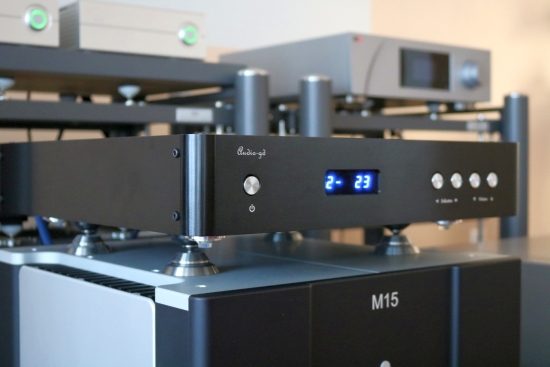
Appearance and Service
The Audio GD products have a clean and purposeful, simple appearance, with a build that is reminiscent of Ayon products, albeit with all screws in sight, and, on some models, protruding (sticking out), rather than being flush. To address this and make for a cleaner appearance, Magna Hifi offers a service to replace all the protruding screws with flat, flush-mounted types. That kind of service is another upside of purchasing from Magna Hifi.
Components under review
Reviewed here are the Master 1 preamp, R8 DAC, and Master 3 power amp that will be used as a complete system as well as independently, and will be compared with a range of other components. All three components are true balanced designs and all are capable of being connected via ACSS, which is a current-driven connection, similar to, and compatible with, Krell CAST, as well as via cinch and XLR. The signal-carrying circuits are built exclusively using discrete components and no SMD components and no Op-Amps are applied in the analog section. Heavy emphasis has been placed on the power supplies, the preamp using 3 R-core linear power supplies with 9 stages of regulation and the DAC using no less than 21 low-noise regulation stages. According to the official specs, all parts and components are selected based on sonic performance as well as technical measurements and in all cases, high-grade parts and exactly matched transistors are used throughout. Looking at the circuit boards, their layout, and how they are populated, it is clear that these products really are built with great care.
Running In
Because all the components were still new, I kicked off my listening sessions by using all three components together, all interconnected using ACSS cabling and let them acclimatize for over two weeks by being switched on all the time and playing music as much as possible while assessing the intermediate performance now and then. I found that while the DAC and preamp were very quick to settle, the power amp took by far the most time to perform its best and fill out tonally, going by my findings at least a week of continued use, with further smaller gains beyond that.
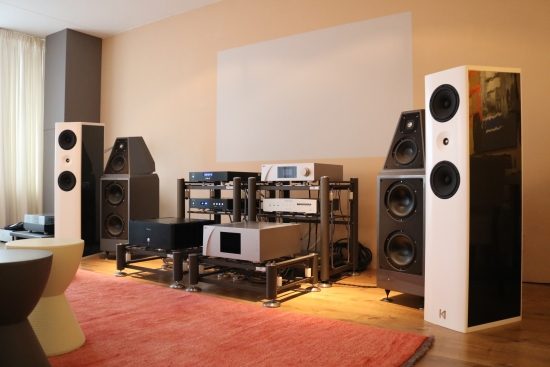
Audio GD System Performance
Although we’re only at the beginning of this review and I will dive deeply into the three components’ individual qualities further down, I will jump the timeline, straight to later in the reviewing process, to comment on these component’s performance as a complete system, using all Magna Hifi ACSS connections: it’s simply impeccable! With this system driving the Kroma Audio Carmens, I was entirely happy. This was a performance that bordered on what’s normally possible only by using reference-class equipment that carries multiples what the Audio GD system costs. Was there nothing to nitpick, then? Sure there was, and I’ll get into that in the next two parts of this review, but the point is that the combined delivery was so natural and transparent and so convincing and engaging that I could just relax with it and enjoy whatever I played. And never did I have the feeling that I was being shortchanged in any way. Given the level of components that I am used to listening to, that is quite an achievement. Although the components themselves are of course mainly responsible for this, as would become clear later, a sizable chunk of the performance came from using ACSS cables throughout, further making a case for the system approach.

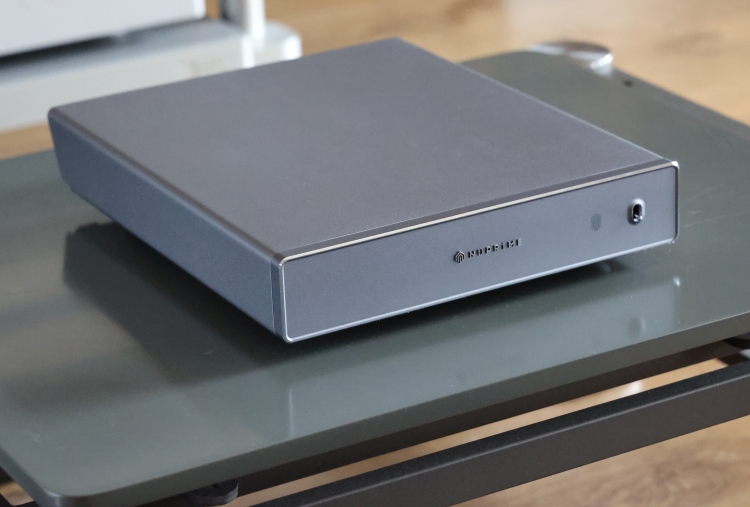
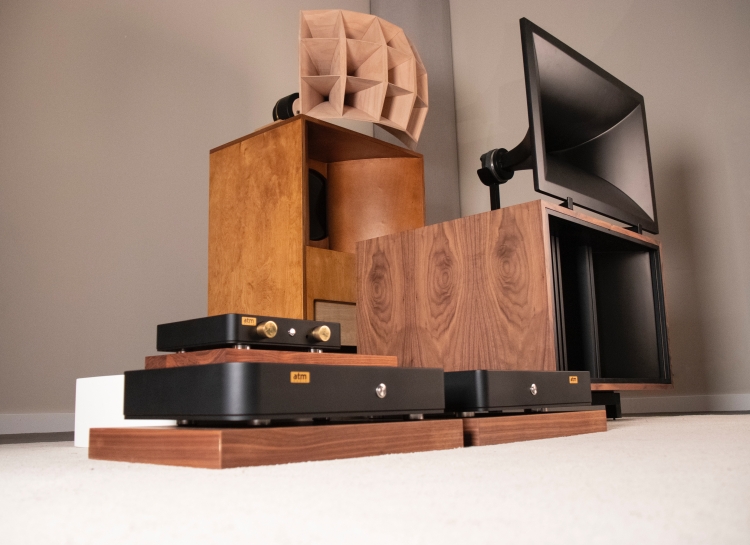

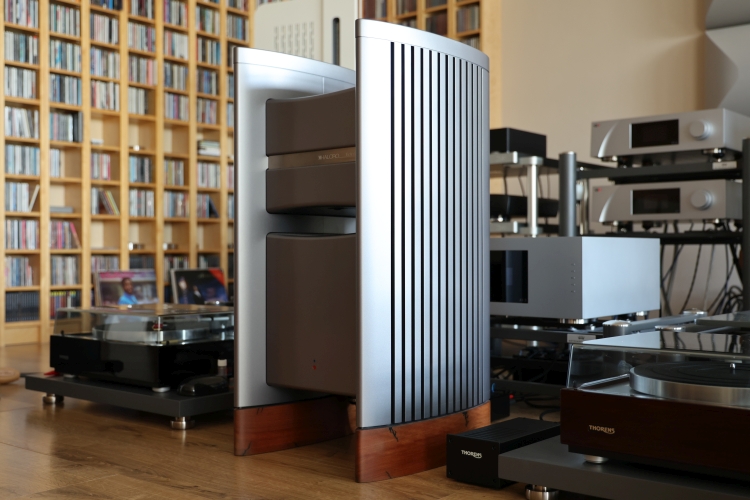

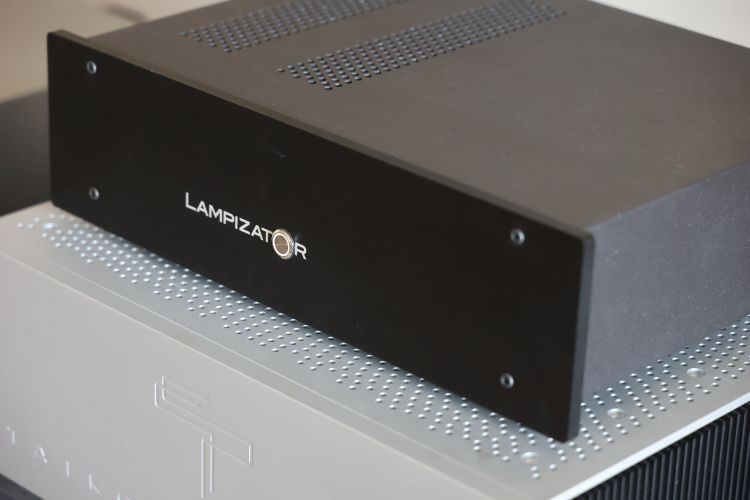
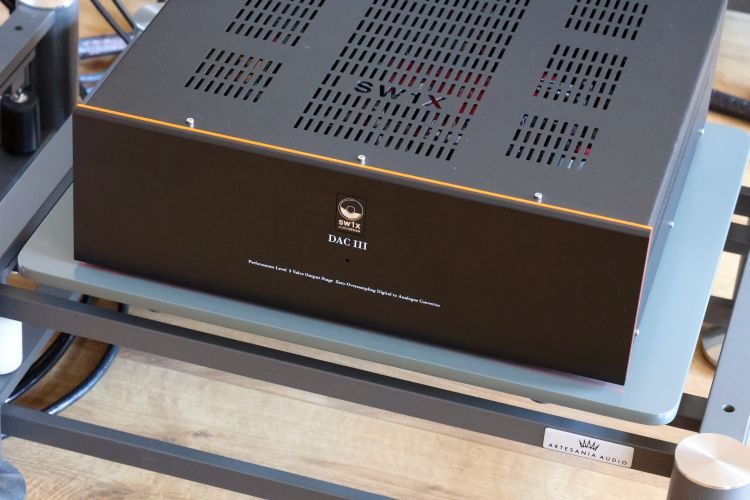
Hi Christiaan,
In the running in paragraph you mention using all components together, so I wonder how you manage to establish that it is the power amp that needs the most time settling in, rather than the preamp or DAC. How can you tell?
Kind regards, Johan
Fair question Johan! Well, it’s simple, really. I just shuffled the timelines in the story-telling. In reality, I first listened to the DAC, then the preamp, and then the power amp. When I found the latter to sound thin at first, I left it switched on while tending to other things to review and revisited the amp later and only the complete system all the way at the end.
Thanks for clearing that up, now it makes more sense.
Your review pretty much sums up the way my Audio-Gd Master 10 sounds though I think you were a bit to polite in your review as really it just sounds boring and not in an accurate way . Audio-Gd’s Kingwa is polite to sell a product but when it comes to supporting their customers for a warranty his politeness ends as I still have a Master 10 with a right noisy channel and absolutely no help from Audio-Gd in resolving this pretty much the attitude of most Chinese sellers towards foreigners . If you do not mind reviewing Chinese amplifiers you should take a look at a Chinese amplifier inspired by DartZeel called the NHB-268/368 on TaoBao SR Audio or AliExpress Queenway a real bargain though again no support for its customers .
Hi Stoka, having a noisy channel is not good of course and this should be fixed. I am sorry to hear that the Audio-GD customer support is not any help in this. That is why it is advisable to buy from an official distributor rather than factory-direct. Anyway, regarding the Master 10 sound, I agree that it is not very entertaining or special on its own. It is very neutral and quite transparent but indeed not as accurate or refined as my much more expensive alternatives. When connected using the very full and organic sounding M-Way ACSS cables throughout, however, I found the combo to sound very good, especially given the relatively low price tag. I think I outlined all of these aspects in the review. For me, the preamp and especially the DAC are the stars in this lineup.
It is a fair point but I purchased before they were available in stores . Though you would think the actual owner Kingwa would be of a more decent attitude towards his customers . I would love to try the ACSS though it is tailored predominantly only for Audio-Gd DAC’s which limits its use unless you have Krell’s old school current driven equipment . When matched with a decent powered tube pre-amplifier the NFB-268 I have bought absolutely puts the Master 10 amplifier to shame where I have delegated the Master 10 to my home theater rears channels .
What do you think about timbre charateristics of the Master-10? Have you ever listened Nuprime amps?
Audio-Gd is not innovative it does as all Chinese manufacturers do they copy well implemented Western designs such as Audio-Gd’s ACSS is just copied from Krell and its buffered output is from Sansui and its Ladder DAC’s were a copied response to the discrete DAC fad the Western DIY community started . Though the difference Audio-Gd has over most Chinese copy manufacturers it is well implemented and sounds half decent for the money and is of course built like a battleship .
Wow……
thanks for the great review…..as usual
and you have not heard the big-brother R7…..
and yes…..it is right…the front panel as its own logic……but once you get it, it is clear.
I am waiting for Master 3 and Master 1 to arrive at my house soon, and I am already a very happy owner of an R8 dac.
After testing a Metrum Ladder dac recently at an international Audio Show in Australia where we presented our speakers, I decided to have a ladder dac in my system.
The Metrum is a great dac, but I think the R8 is even better. But to be fair, it is difficult to confirm it without making a side by side comparison with the same audio system.
All I can say is that in our system and for the first time I have listened to the most analog sound of any digital component to date.
Talking to Kingwa he mention that his Master 2H monoblocks is the option if you are looking for a more bassy amplifier but with the same refinement and natural sound as the Master3
Did you get your Master 1 and Master 3? How does the match sound with your R8?
I am of course not in any manner involved or part to Audio-GD business.
I am just an audio enthusiast!
i purchased the R7 DAC, and 20 days later the pre Master 1 from Magnahifi
both products are fantastic!
connected via ACSS
they easily outperform everythink i have listened in the past for
tranparency, timbre, soundstage, articulation and precision.
a great and involving musical experience
The bass “presence” in the Orchestral pieces is simply great
not to mention that the R7 (and R8 as well) has 4 different algorithms to match your personal taste, and firmware updates.
I decided for Audio-Gd thanks to the great work of the Reviewer himself. Otherwise the brand itself is quite obscure and unknown.
Christiaan’s transparency, precision impartiality and deep-technical background makes reading hifi-advice reviews a real pleasure.
Thanks Luca, it’s great to receive such feedback and I’m glad to hear that you are so happy with your Audio GD components!
Hello Christiaan,
Thank you for the review, very interesting.
I have the R8 DAC and I think its an outstanding DAC. Nevertheless, I STRONGLY recomend some upgrades (ot too expensive) that I think turn the R8 into a musical beast:
1. If you have an R8 version prior dec-18, buy the V2 DA boards from Audio-GD directly and then change them at home. You will need some tech skills or to have a trusted technician near by as I did.
2. Acusilicons clocks. Another GREAT upgrade that you can buy at Audio-GD and similar to change as the V2 boards.
3. Gustard U16. A UBS to I2S (HDMI) converter. Another GREAT upgrade to feed the R8 with the I2S port and get a MUCH better sound than with the USB Amanero board.
4. W4S UBS Reclocker. A good one to feed the U16 with a cleaner USB signal. Or any other good USB conditioner.
There are several threads about these three first upgrades on Head-Fi forum.
Regards,
Thanks for these suggestions Pedro.
Hi Christian,
I’m the owner of HULGICHAUDIO (www.hulgichaudio.com.au) and I regularly read your reviews as I find them very well presented and professional.
Having some AudioGD gear myself I can’t agree more on your observations about their sound.
As a developer of high-end speakers, I regularly have the opportunity to test very hi-end equipment myself, and AudioGD is amazing great value.
Best regards.
Nicolas Hulgich
HULGICHAUDIO
Hello again Christiaan,
I had the opportunity to try a Benchmark DAC3 in my system last night, in comparison to my 2021 R8, which is paired with a Master 1 & AMG-STAs. I noticed that the Benchmark had a slight, but meaningful edge in the presentation of vocals. More detail and texture was clearly audible to both my friend and I.
I would really value your advice on which parts of my system you would consider developing to move in the direction of this particular outcome? Other than just buying a Benchmark DAC3 🙂
This is my setup (a lot of which will be familiar to you):
A modded Cisco Meraki switch with an SBooster linear psu, connected to a ethernet fibre media converter, on the 5v output of a Keces P3 linear psu
A Mano Ultra streamer via an Audioquest Pearl ethernet cable and Mogami SPDIF cable
A MiniDSP SHD Studio with a Mogami 3080 AES/EBU XLR digital cable on the 12v output of a Keces P3 Linear PSU
An Audio-GD R8 Dac 2021 with two M-Way ACSS NTRL interlinks
An Audio-GD Master 1 Preamp with Foilflex XLR Balanced cables
A pair of Nuprime of AMG STA power amps on IsoAcoustics Orea Graphite pucks
A pair of Wilson Benesch Precision P1.0 with a pair of FoilFlex loudspeaker cables on IsoAcoustics Gaia IIIs
A pair of Townshend Maximum Supertweeters
A pair of REL T/7i subwoofers on IsoAcoustics Gaia IIIs
Thank you as ever & best wishes,
Jason
Would it be possible to approach Magna about getting an Audio GD R7HE Mk2?
Headfi is going mad for this dac, so it might be good to compare it to the Aqua Formula HDx V2 that you have. I, for one, would be very interested to see how it stacks up,
Thanks
Hi James, can’t promise but will keep it in mind.
Hi James, alas, due to the limited availability and increasing delivery times, I am unable to get the Audio-GD or Holo Audio components for this review. At this point, and so long as the situation remains unchanged, the distributor understandably would rather make sales than postpone these due to reviews. The Denafrips components will be available in about a month and I am considering doing a one-brand comparison with three product levels.
Hi Christiaan,
You have reviewed the Bryston 4B3 amplifier in the past.
I know it’s difficult to compare from memory but how does the Master 3 fare against the Bryston you think ? I know the Bryston is much more expensive but the Audio-gd gear seem to push the limits of their price range. I expect the 4B3 to sound much better but by how much ?
best regards
They’re so different that I couldn’t say which one is better per se. The Bryston sounds full and rich in the bass, smooth overall, a little sweet, and a little relaxed, but quite neutral nonetheless. The Audio GD has a tight and articulate bass, with an overall faster, cleaner, leaner sound. In terms of resolution, I’m not entirely sure without an AB comparison. It could be a tie or maybe the Audio GD is slightly more highly resolving. Either way, it’s mostly a case of more forgiving versus more analytical. You may find the Bryston to be more “musical” but I feel that the Audio GD is closer to sounding like a wire with gain. On a related note, my experiences with the M2H monos have made me think that maybe I haven’t given the Master 3 enough time to come on song. Or maybe the M2H’s are just that much better, that’s also entirely possible.
hi Christiaan
Wow, you’re fast. The “ink” on my post hasn’t dried yet and you already came with an answer !
I already own the Master 3 and overall I’m quite satisfied with how it sounds. I was just wondering if spending more would bring a significant improvement. However, reading your comment it seems that the current price of the Bryston (€ 7.500) being almost 3,5x the price of the Master 3 is not really justified. It seems more of a side way step than a real improvement. What would you recommend as a step up from the Master 3, besides the 2H monoblocks (too much “real estate” for my living room) and staying below the five figure price tag of the high end ?
By the way, may I recommend reviewing the Rotel Michi S5 power amp ? This one seems to be a winner and is even relatively affordable.
best regards
It depends on what you consider an improvement as well as on what you expect. The Master3 can be regarded as neutral and highly resolving but perhaps a bit lean and analytical whilst the 4B3 can also be regarded quite neutral but richer and more colorful and with bigger/fatter bass. There are no absolutes. What I can say is that if you like the Bryston sound, it will be very hard to improve upon without spending a fortune. And the same goes for the AGD. Between these two, it’s more a matter of perception than of absolute quality. One person may feel that the Audio-GD is not very musical while another may feel that the Bryston can be a little slow. One major upside for Bryston, of course, is the 20-year warranty.
The next step up from the Master3 is indeed the M2H’s. Anything else that I consider to be significantly better jumps right over the 10K mark (see my amp reviews).
Another brand that also offers amazing value for money is NuPrime, most notably their amplifiers. The AMG STA, for instance, has amazed everyone who heard it, even seasoned audiophiles have to admit it’s much better than they anticipated. It’s not perfect but has a “more or less” similar overall balance as the M2H, as in also linear and transparent, and it improves on the Bryston in some respects, but not all, of course. Also, I wouldn’t say it beats the M2H’s.
I’ve noted the recommendation for the Michi amp. Can’t promise anything, though.
Good evening Christiaan,
I wanted to ask you, kindly, if you have had the opportunity to try, or if you will, also the Audio-gd Master 3A in class A.
Thank you for your attention,
Andrea
Hi Andrea, I’ve not heard it myself but what I am told is that it sounds smoother and fuller but also less articulate than the Master 1.
Thanks for the quick answer, one last clarification … what do you mean by “less articulate”, perhaps less fast?
Thanks for your kind availability
Articulate is the opposite of mumbling or being close-mouthed. I use it when referring to music that sounds very precise and detailed, particularly in the lower frequencies, as opposed to sounding warm, fat, thick, or woolly. See also the HFA Audio Lingo.
“Wow, look at all this time that has passed, I wonder where Audio-GD is in terms of DACs and preamps at this point vs lets say, Denefrips and/or others…”
Any chance of seeing a R-27HE review (DAC/pre), and/or its separate counterpart the R-7HE MK3 DAC and the HE-1 MK3 preamp??!!
Yeah, time really does fly! Regarding the R-27HE, I would be happy to review it if the distributor wants to set this up.
…I just heard there is a huge jump in quality and performance since their pre- 2021-ish models.
@Christiaan, I’ve reached out to a Audio-GD and Magna to see if they can’t get the ball rolling. Let me know if the care about their potential customers!
Hi Marc, I’ve not yet heard back from them. But if and when a review is planned, I will announce it on the home page.